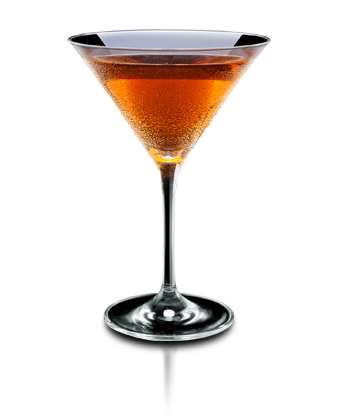Drink of the Week: The East India House Cocktail
 It’s not exactly a secret around here that I greatly lean towards cocktails as opposed to drinking even truly fine spirits straight. Still, it’s fairly obvious even to me why the best cognacs and other high end brandies are among the most popular of all beverages to enjoy neat. Certainly that applies to the Ile de Ré Fine Island Cognac from the Camus line of fine cognacs with which I was recently blessed by the Powers that Booze.
It’s not exactly a secret around here that I greatly lean towards cocktails as opposed to drinking even truly fine spirits straight. Still, it’s fairly obvious even to me why the best cognacs and other high end brandies are among the most popular of all beverages to enjoy neat. Certainly that applies to the Ile de Ré Fine Island Cognac from the Camus line of fine cognacs with which I was recently blessed by the Powers that Booze.
The PR materials for this brandy emphasize the fact that this particular cognac actually comes from a tiny island off the coast of France which is legally included in the Cognac appellation. My grasp of French geography is nowhere near strong enough for me to know if this is a bit of alcoholic loophole, but no one seems to be complaining about the quality of this cognac which, we are told has a “maritime” feeling and a dash of iodine in its flavor. I’ve never drunk iodine, so I wouldn’t know, but this is definitely about as sippable as any brandy or cognac I’ve enjoyed, and there is a bit of similarity to a good, slightly smokey Scotch I’m sure many will enjoy. It’s also very, very good with an equal part of brandy’s best known significant other, Benedictine.
Nevertheless, while many consider it a sacrilege to make cocktails out of really outstanding cognac, breaking that particular taboo is a big part of the name of the game here at DOTW Central. Even so, we’ve managed to find a very nice cocktail that permits the cognac to be the star of the show, adding a number of sweeteners in small amounts to make for an intriguing and very drinkable whole. While not the equal of the mighty Cognac Sazerac, todays drink is worthy of the status of a very good second-tier classic.
The East India House Cocktail
2 oz cognac (or brandy, if you are an impoverished peon who doesn’t get free booze in the mail)
1 tsp. pineapple juice
1 tsp. superfine sugar
1 tsp. orange curaçao
1 tsp. maraschino liqeuer
1-2 dashes aromatic or Peychaud’s bitters
1 cherry or lemon twist (fairly optional garnish)
Combine the ingredients in a cocktail sugar, stir briefly to dissolve the superfine sugar. Add ice, shake vigorously and strain into a well chilled cocktail glass. If you’re looking for something to toast, you might consider the phylloxera louse. While it’s not typical to salute a vine-eating vermin, this wingless insect was kind enough to leave the Ile de Ré alone back in the 1850s even as it was munching up mainland wine crops. I’m not 100% sure this is relevant to the quality of the island’s cognac today; I just like saluting lice.
****
There are several versions of this drink, also sometimes referred to simply as the “East India Cocktail,” so feel free to experiment. Some versions I stumbled upon call for raspberry syrup in place of the pineapple and sugar, which sounds worth a try. Robert Hess of “The Cocktail Spirit,” dispenses with the sugar and just goes with the pineapple juice, though the original recipe called for pineapple syrup (i.e., pineapple juice and sugar). I found his version a bit lacking.
While I’m a fan of all of the ingredients, I’m not certain I’ve found the perfect mix here, so I definitely encourage further experimentation. If anyone out there has better luck with different proportions, I’d love to hear about it. I will say my favorite version featured Angostura bitters and a lemon twist, but every permutation I tried worked fairly well.
For those of you wondering about the name of this week’s drink, the East India House was a real place in London. It was the headquarters of the East India Company, which was crucial in the development of British Imperialism from the Renaissance up through the 19th century, when it was nationalized by the English parliament.
Especially if you’re of Indian or Chinese extraction or just really into human rights, you might consider a drink with a name like that to be a distasteful celebration of oppression. However, another drink I considered making this week was called the “Antebullum Mint Julep” which we are told was a drink commonly enjoyed at pre-Civil War Southern Plantations. What next, I wonder. “The Gestapo Cocktail” or, perhaps less offensively, “The Spanish Inquisition”? as you may be aware, at least that last cocktail has the virtue of being forever unexpected.
You can follow us on Twitter and Facebook for content updates. Also, sign up for our email list for weekly updates and check us out on Google+ as well.










